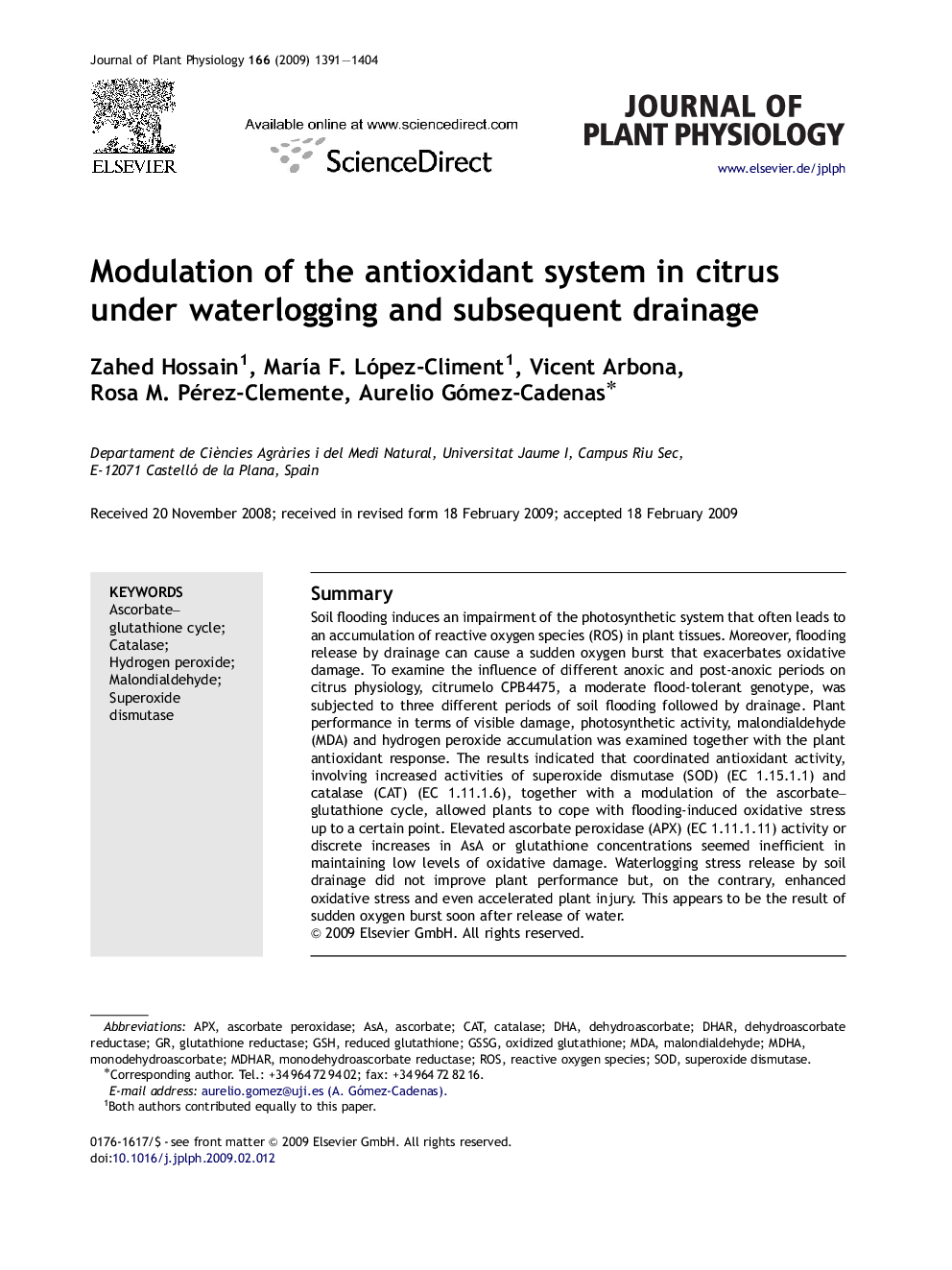| Article ID | Journal | Published Year | Pages | File Type |
|---|---|---|---|---|
| 2057174 | Journal of Plant Physiology | 2009 | 14 Pages |
SummarySoil flooding induces an impairment of the photosynthetic system that often leads to an accumulation of reactive oxygen species (ROS) in plant tissues. Moreover, flooding release by drainage can cause a sudden oxygen burst that exacerbates oxidative damage. To examine the influence of different anoxic and post-anoxic periods on citrus physiology, citrumelo CPB4475, a moderate flood-tolerant genotype, was subjected to three different periods of soil flooding followed by drainage. Plant performance in terms of visible damage, photosynthetic activity, malondialdehyde (MDA) and hydrogen peroxide accumulation was examined together with the plant antioxidant response. The results indicated that coordinated antioxidant activity, involving increased activities of superoxide dismutase (SOD) (EC 1.15.1.1) and catalase (CAT) (EC 1.11.1.6), together with a modulation of the ascorbate–glutathione cycle, allowed plants to cope with flooding-induced oxidative stress up to a certain point. Elevated ascorbate peroxidase (APX) (EC 1.11.1.11) activity or discrete increases in AsA or glutathione concentrations seemed inefficient in maintaining low levels of oxidative damage. Waterlogging stress release by soil drainage did not improve plant performance but, on the contrary, enhanced oxidative stress and even accelerated plant injury. This appears to be the result of sudden oxygen burst soon after release of water.
